
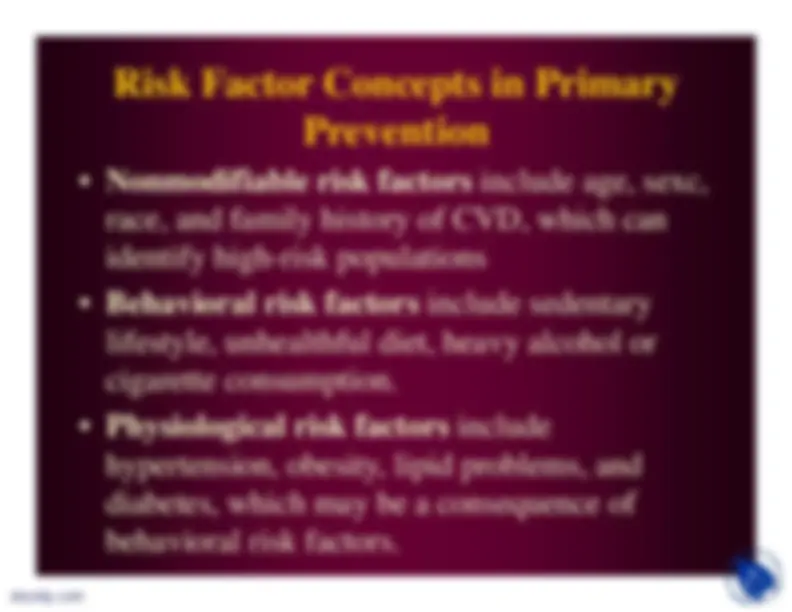
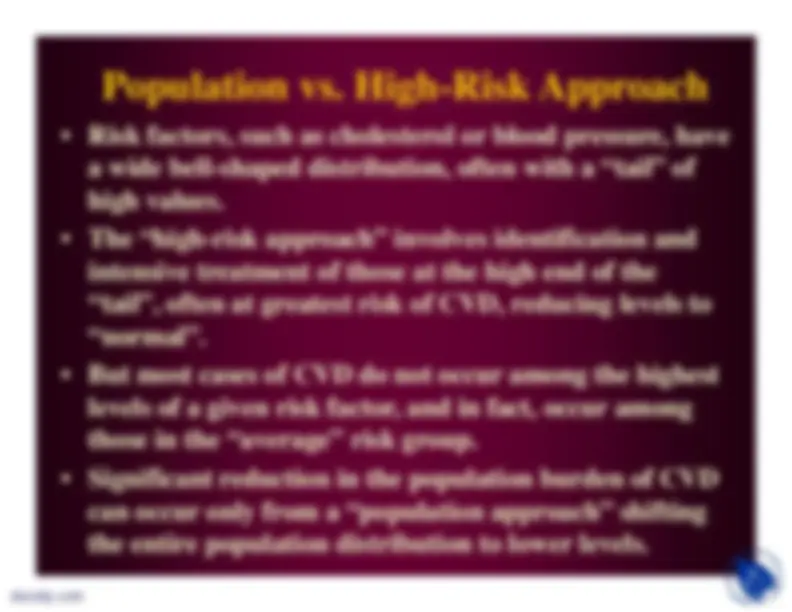
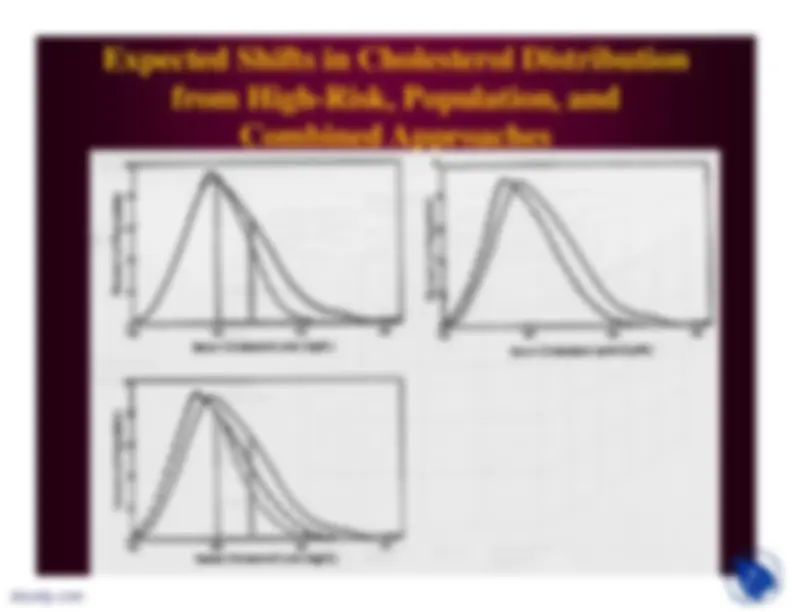

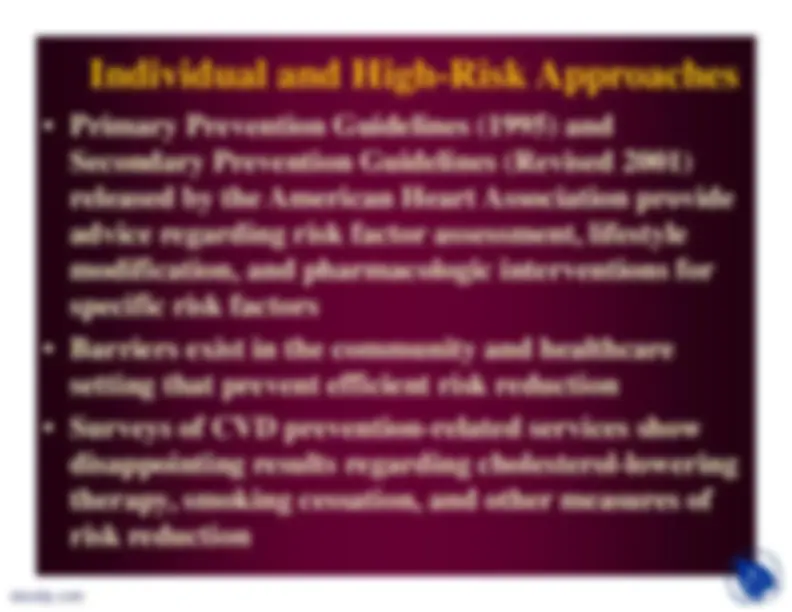
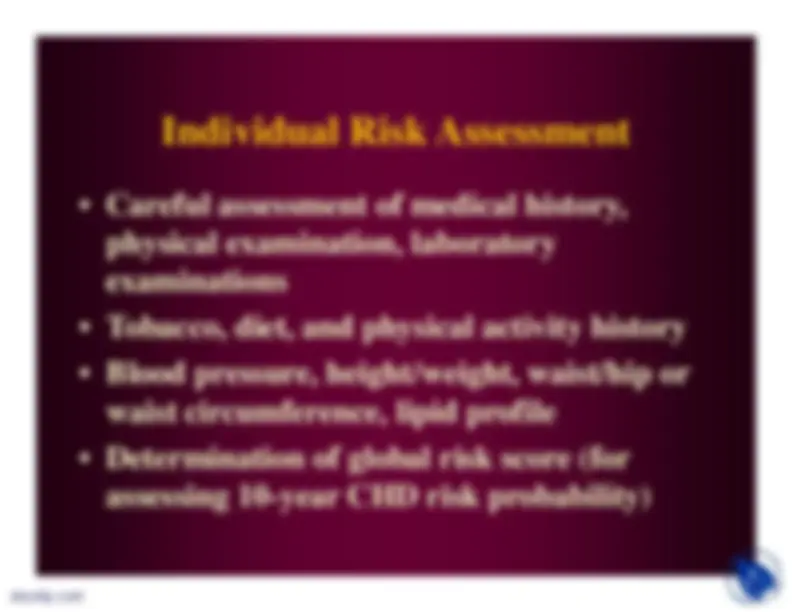
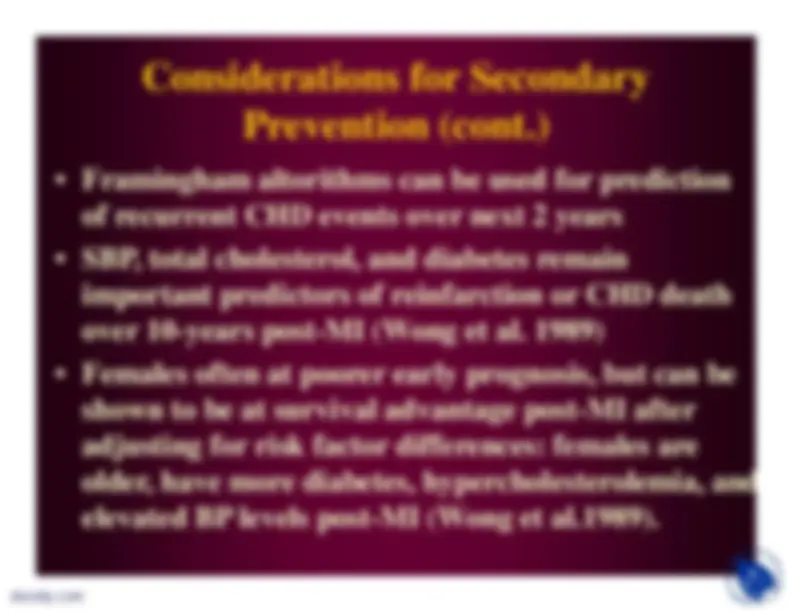
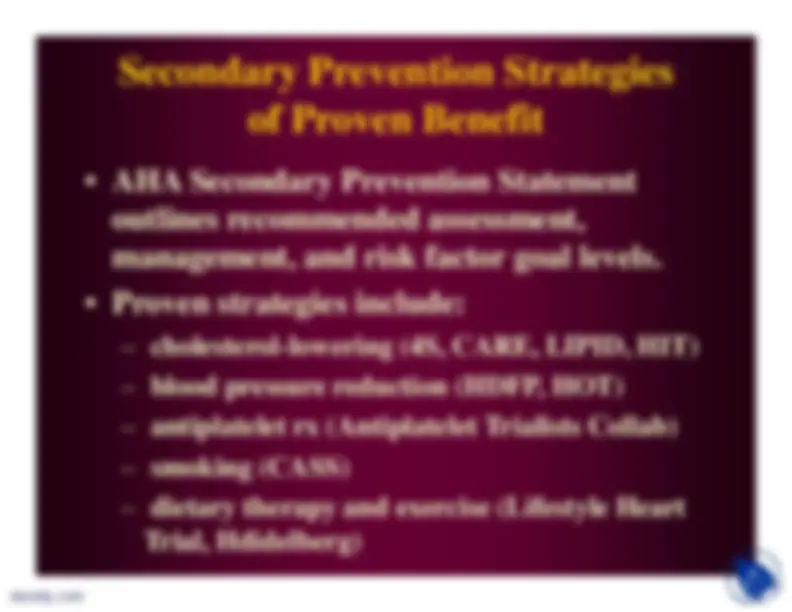
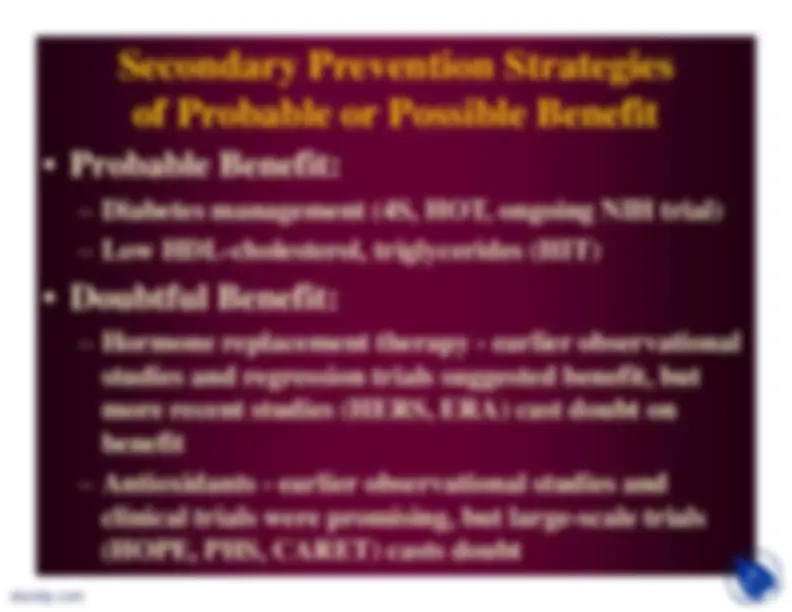


Study with the several resources on Docsity

Earn points by helping other students or get them with a premium plan


Prepare for your exams
Study with the several resources on Docsity

Earn points to download
Earn points by helping other students or get them with a premium plan
Community
Ask the community for help and clear up your study doubts
Discover the best universities in your country according to Docsity users
Free resources
Download our free guides on studying techniques, anxiety management strategies, and thesis advice from Docsity tutors
This lecture belongs to lecture series on Health. Almost all topics related to health are covered in this course. Key points in this lecture are: Cardiovascular Disease, Prevention of Cvd, Risk Factor, Nonmodifiable Risk Factors, Population and High-Risk Approach, Cholesterol Distribution, Population and Community-Wide, Community Intervention Trials, Individual and High-Risk Approaches, Individual Risk Assessment
Typology: Slides
1 / 16

This page cannot be seen from the preview
Don't miss anything!










Primary prevention involves prevention ofonset of disease in persons withoutsymptoms.
-^
Primordial prevention involves theprevention of risk factors causative o thedisease, thereby reducing the likelihood ofdevelopment of the disease.
-^
Secondary prevention refers to theprevention of death or recurrence of diseasein those who are already symptomatic
-^
Risk factors, such as cholesterol or blood pressure, havea wide bell-shaped distribution, often with a “tail” ofhigh values.
-^
The “high-risk approach” involves identification andintensive treatment of those at the high end of the“tail”, often at greatest risk of CVD, reducing levels to“normal”.
-^
But most cases of CVD do not occur among the highestlevels of a given risk factor, and in fact, occur amongthose in the “average” risk group.
-^
Significant reduction in the population burden of CVDcan occur only from a “population approach” shiftingthe entire population distribution to lower levels.
Expected Shifts in Cholesterol Distribution
from High-Risk, Population, and
Combined Approaches
-^
Stanford 3-Community Study (1972-75) showed massmedia vs. no intervention in high-risk residents toresult in 23% reduction in CHD risk score
-^
North Karelia (1972-) showed public educationcampaign to reduce smoking, fat consumption, bloodpressure, and cholesterol
-^
Stanford 5-City Project (1980-86) showed reductionsin smoking, cholesterol, BP, and CHD risk
-^
Minnesota Heart Health Program (1980-88) showedsome increases in physical activity and in womenreductions in smoking
Mass media, brochures and direct mail
-^
Events and contests
-^
Screenings
-^
Group and direct education
-^
School programs and worksiteinterventions
-^
Physician and medical setting programs
-^
Grocery store and restaurant projects
-^
Church interventions
-^
Policies
Careful assessment of medical history,physical examination, laboratoryexaminations
-^
Tobacco, diet, and physical activity history
-^
Blood pressure, height/weight, waist/hip orwaist circumference, lipid profile
-^
Determination of global risk score (forassessing 10-year CHD risk probability)
-^
Provides 10-year estimated risk of CHD (some focusonly on hard endpoints, others include angina pectoris),Stroke, CHF, or Intermittent Claudication
-^
Applicable to specific ages and persons w/o CHD
-^
Different versions published:^ –
Wilson 1998 includes LDL-C but ages limited to
30-
NCEP III 2001 version has wider age range but doesnot include diabetes
D’Agastino 2001 version includes diabetes)
-^
Applicable to other ethnic groups as shown fromvalidation studies in other population-based studies
-^
Framingham altorithms can be used for predictionof recurrent CHD events over next 2 years
-^
SBP, total cholesterol, and diabetes remainimportant predictors of reinfarction or CHD deathover 10-years post-MI (Wong et al. 1989)
-^
Females often at poorer early prognosis, but can beshown to be at survival advantage post-MI afteradjusting for risk factor differences: females areolder, have more diabetes, hypercholesterolemia, andelevated BP levels post-MI (Wong et al.1989).
AHA Secondary Prevention Statementoutlines recommended assessment,management, and risk factor goal levels.
-^
Proven strategies include:^ –
cholesterol-lowering (4S, CARE, LIPID, HIT)
blood pressure reduction (HDFP, HOT)
antiplatelet rx (Antiplatelet Trialists Collab)
smoking (CASS)
dietary therapy and exercise (Lifestyle HeartTrial, Hdidelberg)
Major AHA program to implement thesecondary prevention guidelines forpatients hospitalized with CHD
-^
Focuses on evidence-based guidelines
-^
National rollout began in New Englandand California
-^
Future expansion planned for stroke,CHF, and diabetes to address QAreporting requirements